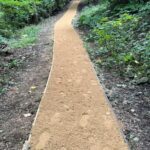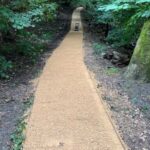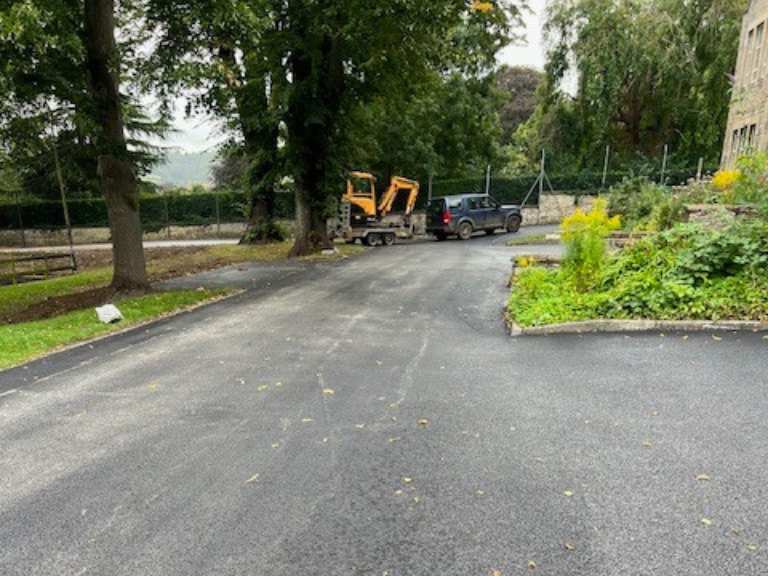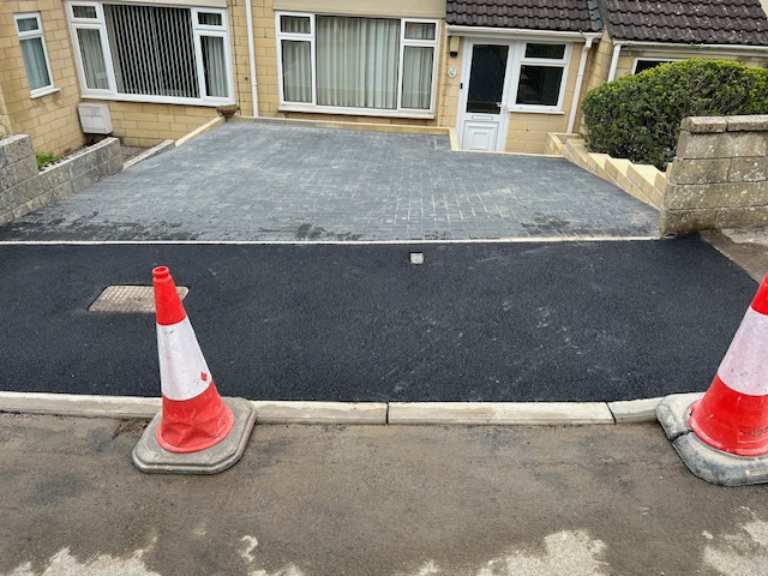Assessing the Pathway Condition
Upon inspection, it was evident that several sections of the timber edging, which helped to retain the path’s structure on the incline, had decayed over time. These rotting edges were beginning to collapse, posing a risk for pedestrians navigating the slope. Additionally, the gravel surface that provided traction on the pathway had worn away, reducing grip and increasing the potential for slipping, especially in wet weather.
Replacing Timber Edging
To address the issue, we carefully removed the rotting timber edges along the pathway. Replacing these with new, treated timber, we ensured increased durability and resilience against future wear and weather conditions. The new edging was installed securely along the pathway to help maintain the shape of the path and prevent erosion, providing both structural support and a visually clean border that would withstand regular pedestrian use.
Re-graveling for Traction and Safety
Once the timber edging was reinforced, we laid fresh gravel along the eroded sections of the pathway. The new gravel layer restored the pathway’s surface, improving traction and creating a safer walking experience for students, teachers, and other community members. The gravel was carefully distributed to match the existing path, providing a seamless and stable walking surface that could handle the daily traffic without quickly wearing down.
Project Outcome
The repairs to the pathway resulted in a safer, more secure route leading to Beechen Cliffe School. With the new timber edging and fresh gravel, the path now offers reliable footing and structural support, significantly reducing the risk of accidents on the incline. Feedback from the school and community members was positive, noting an improvement in both safety and appearance.
This project showcases how focused, quality repairs can restore safety and functionality to high-traffic pathways. By combining durable materials with careful construction, we delivered a solution that not only addressed current issues but also enhanced the pathway’s longevity for future users.










